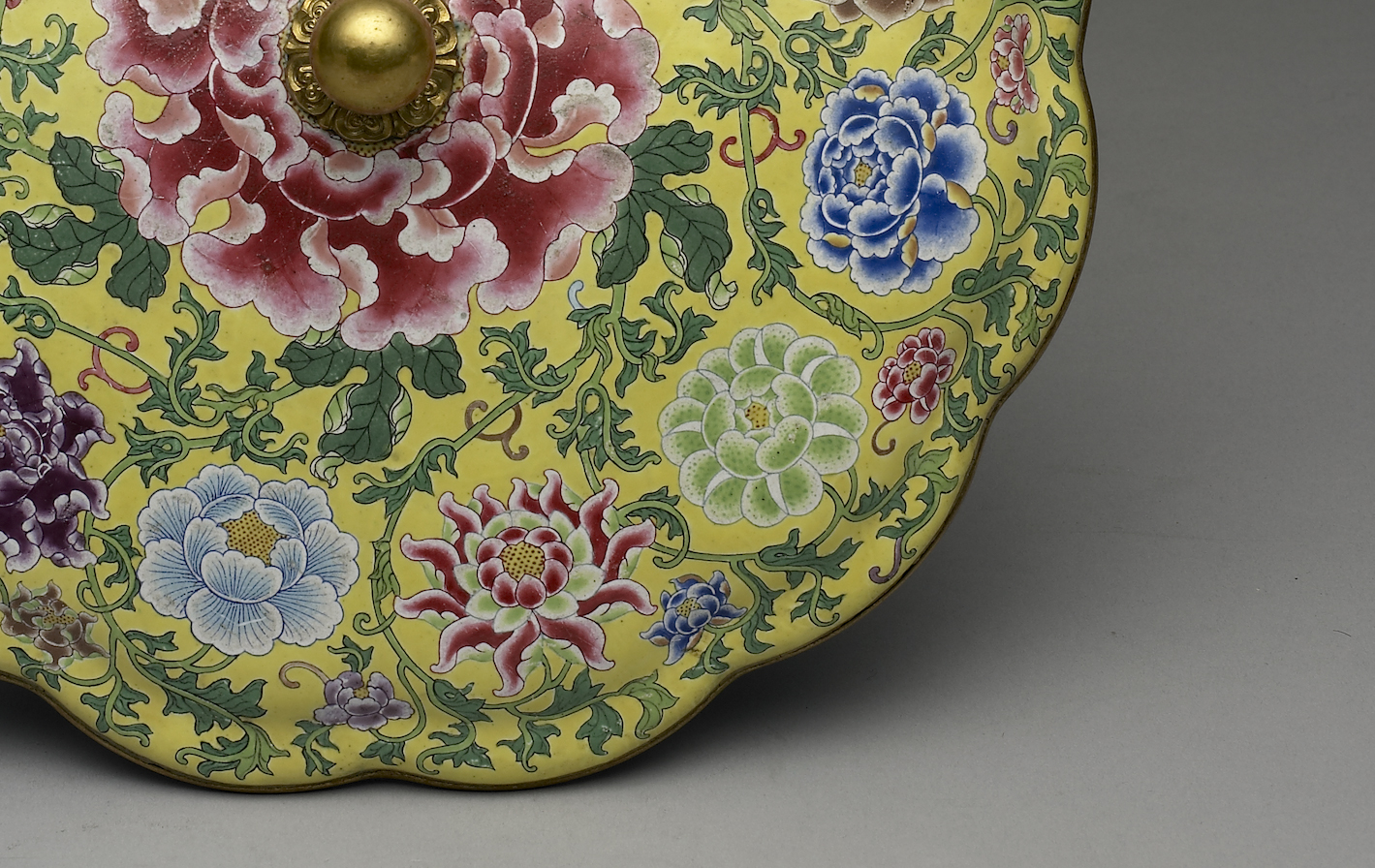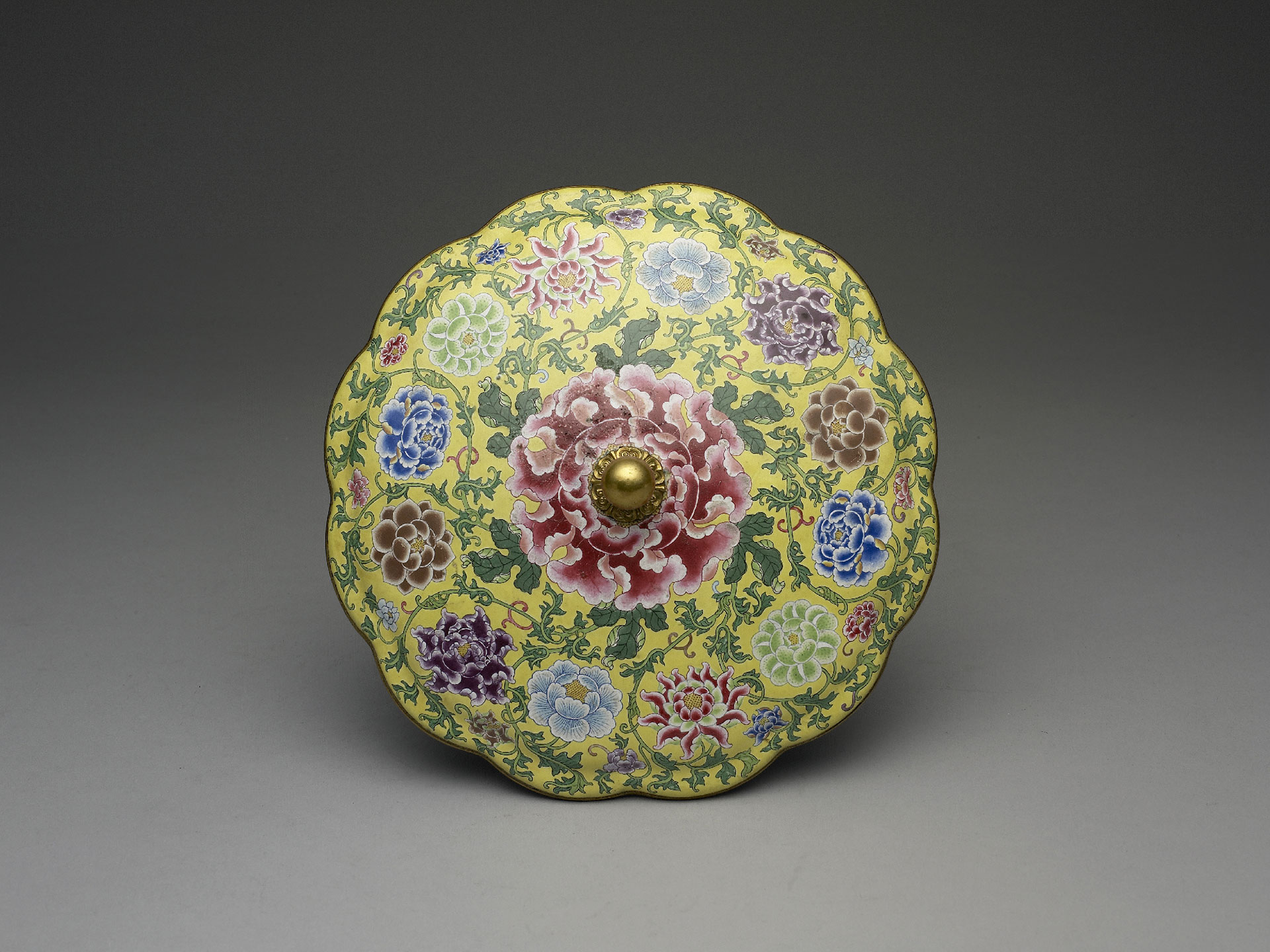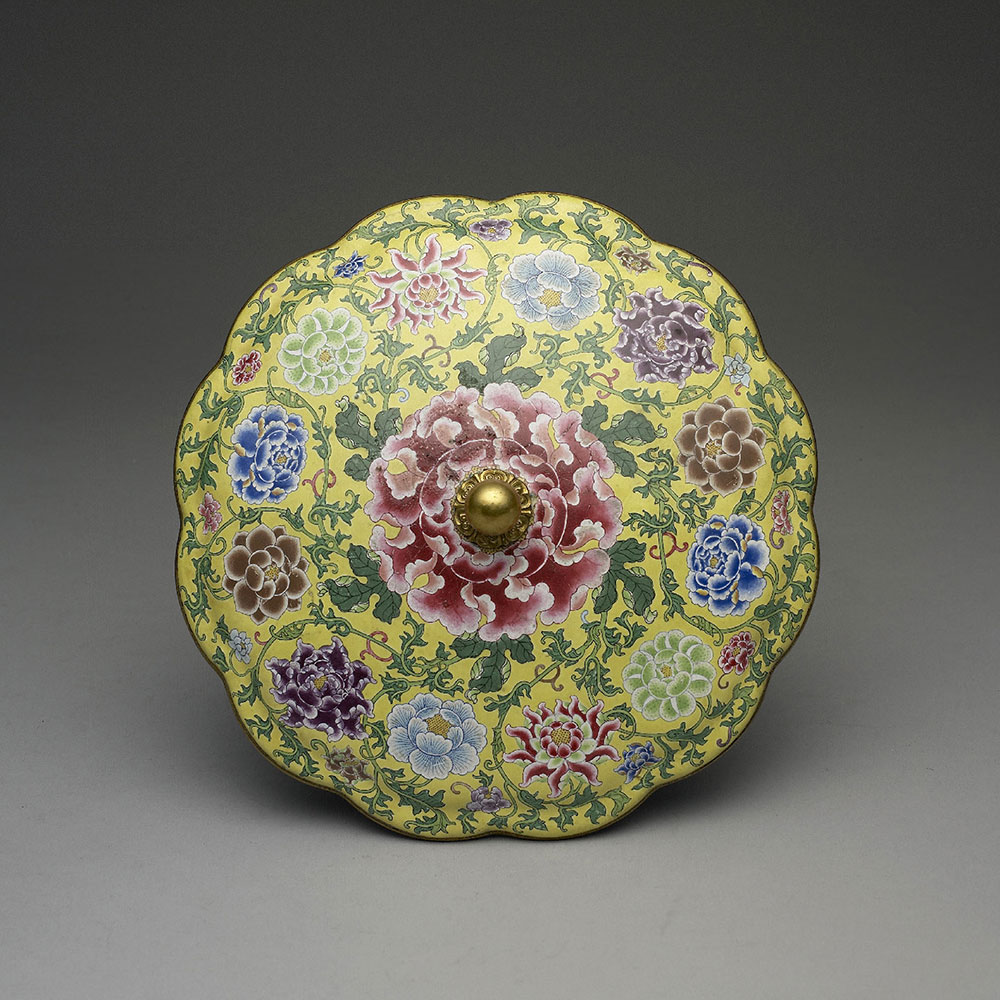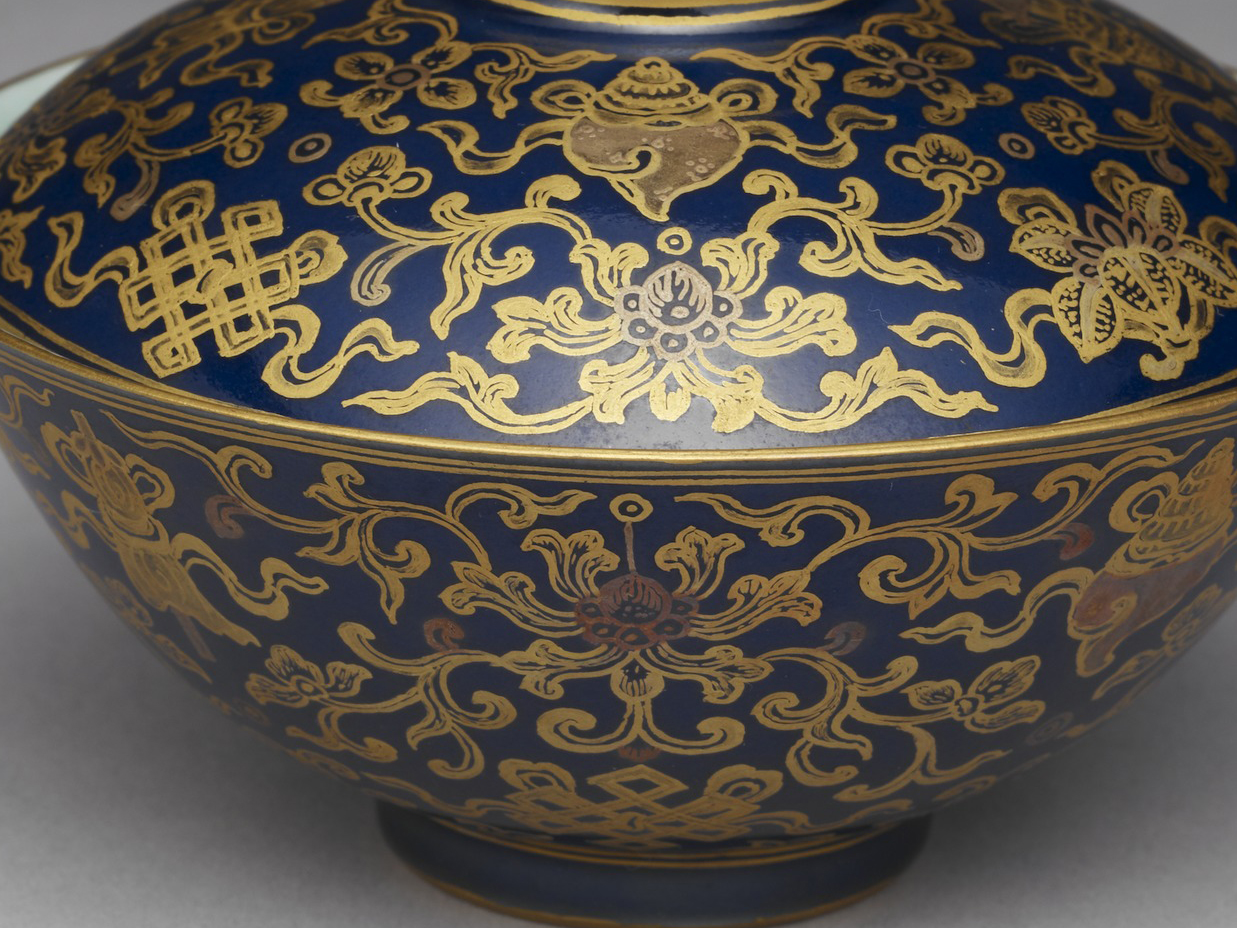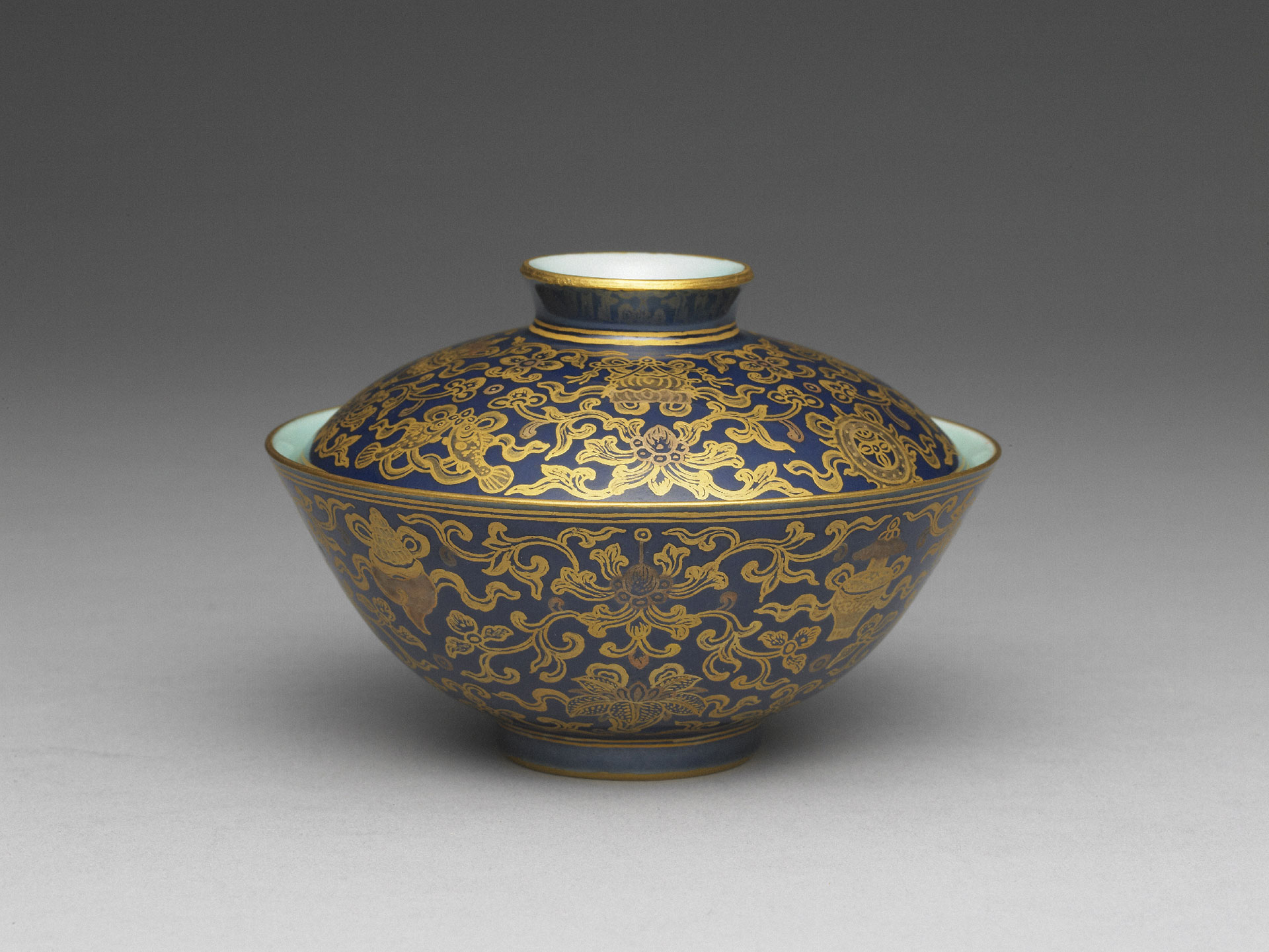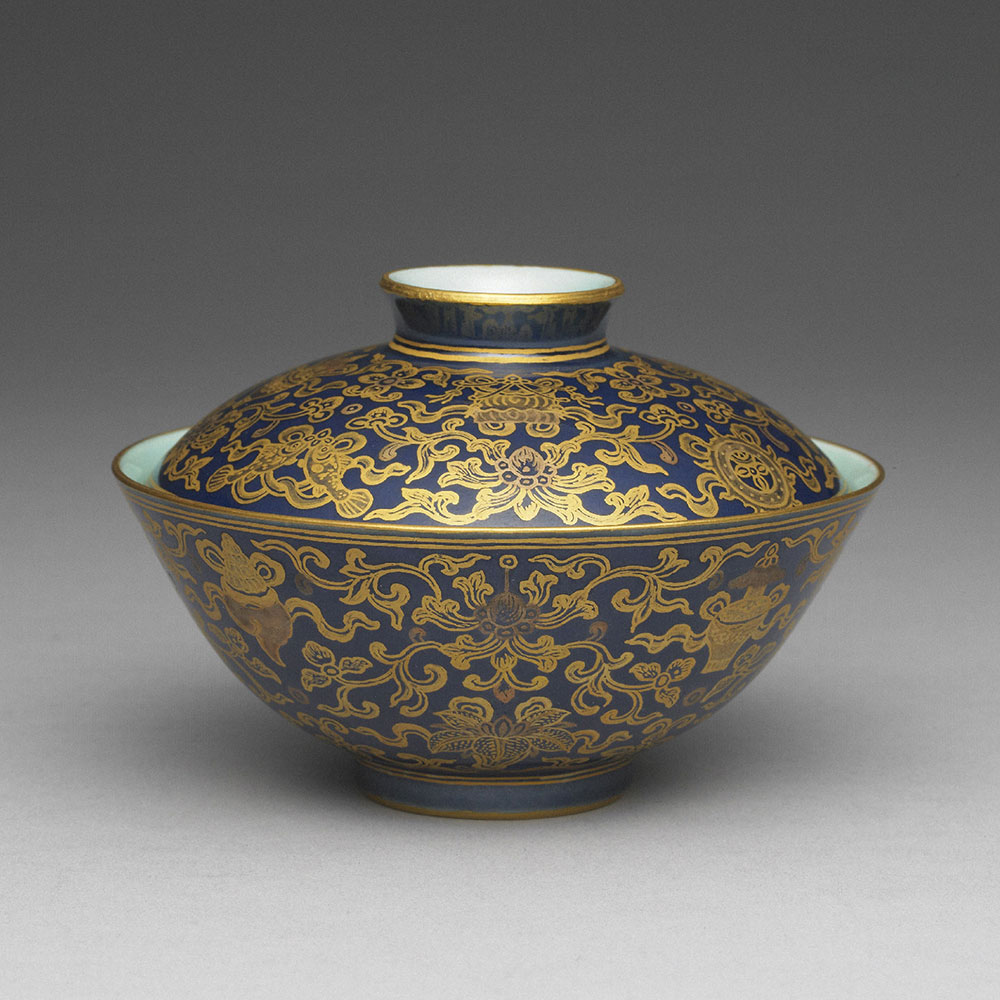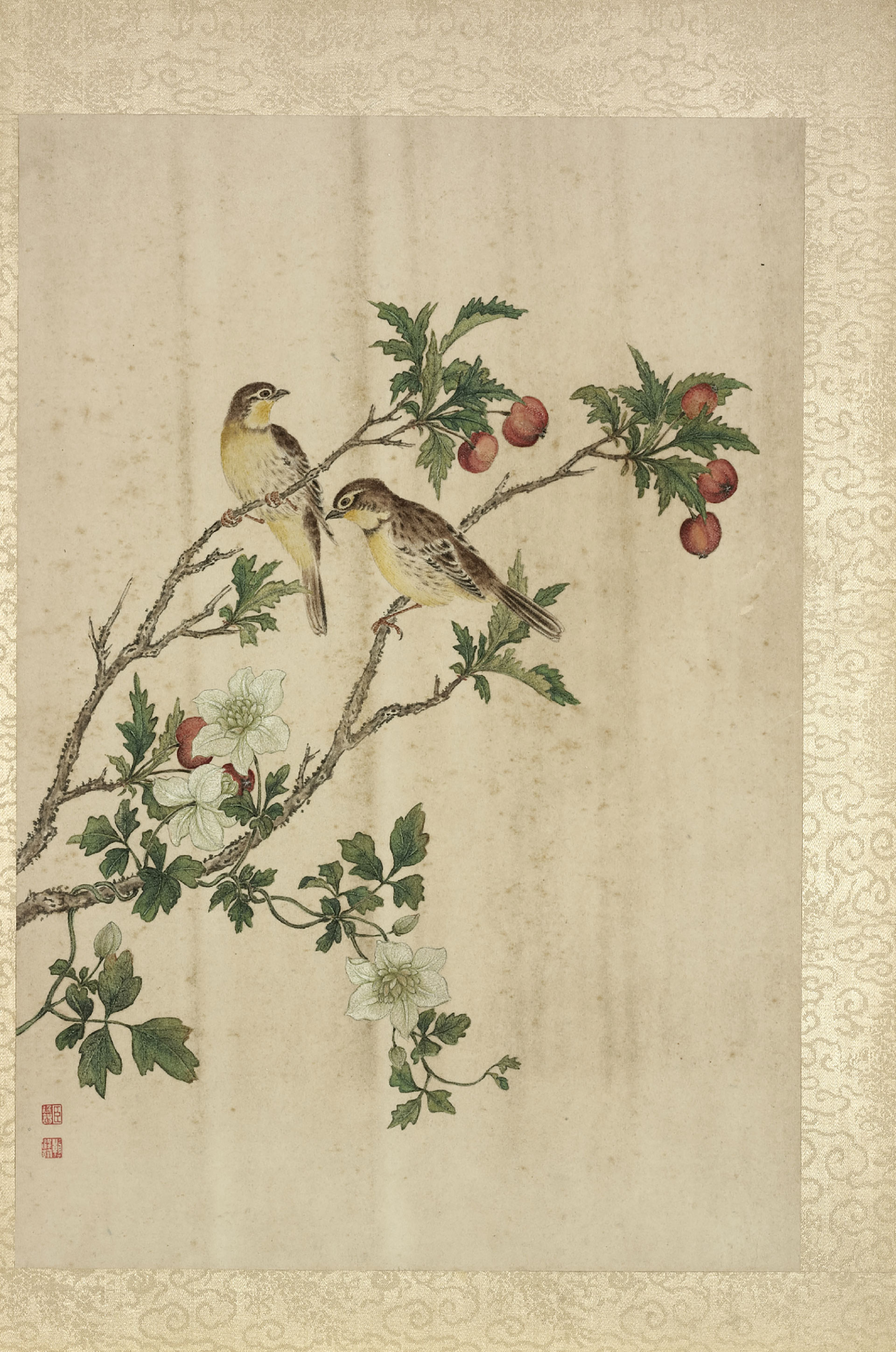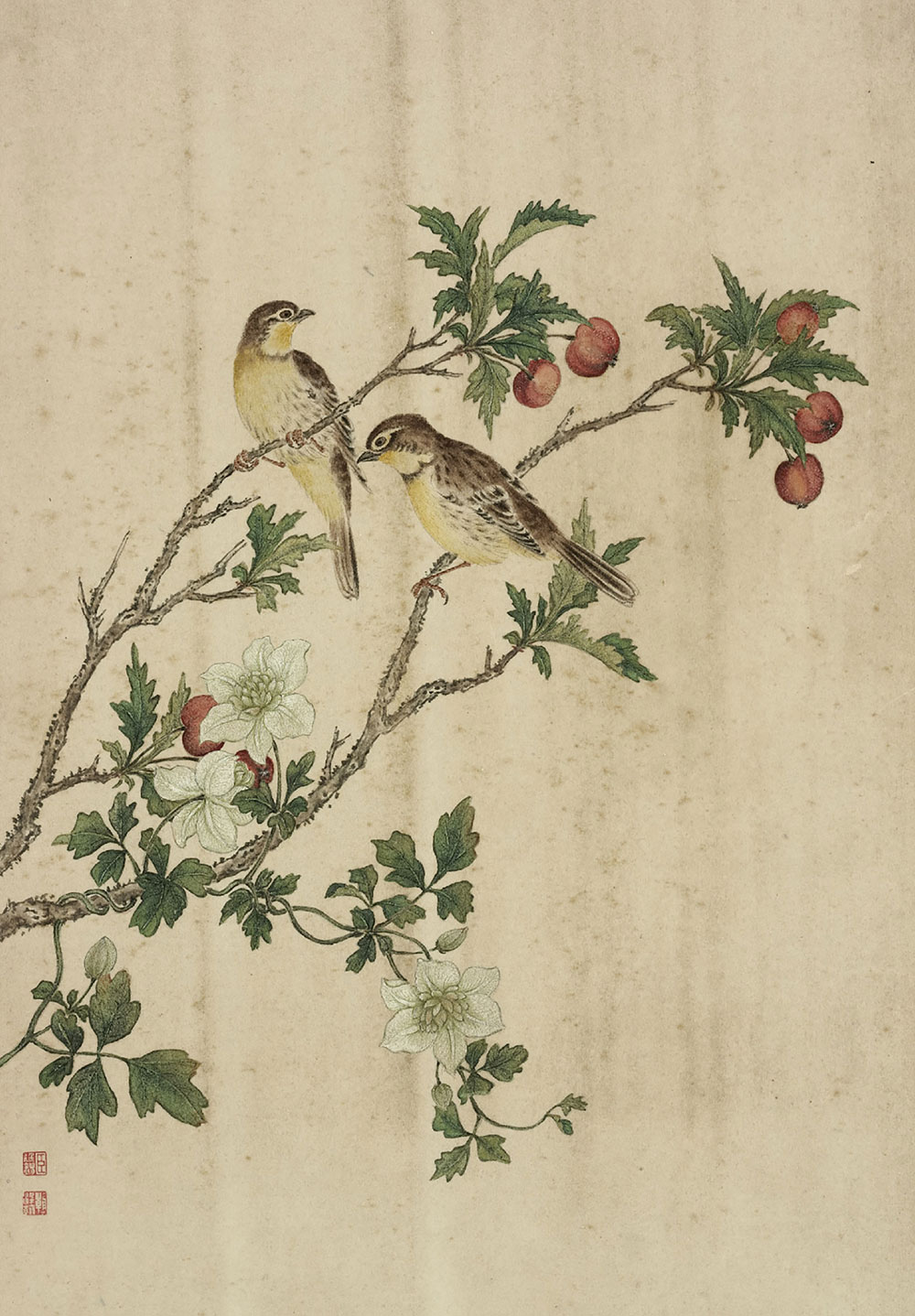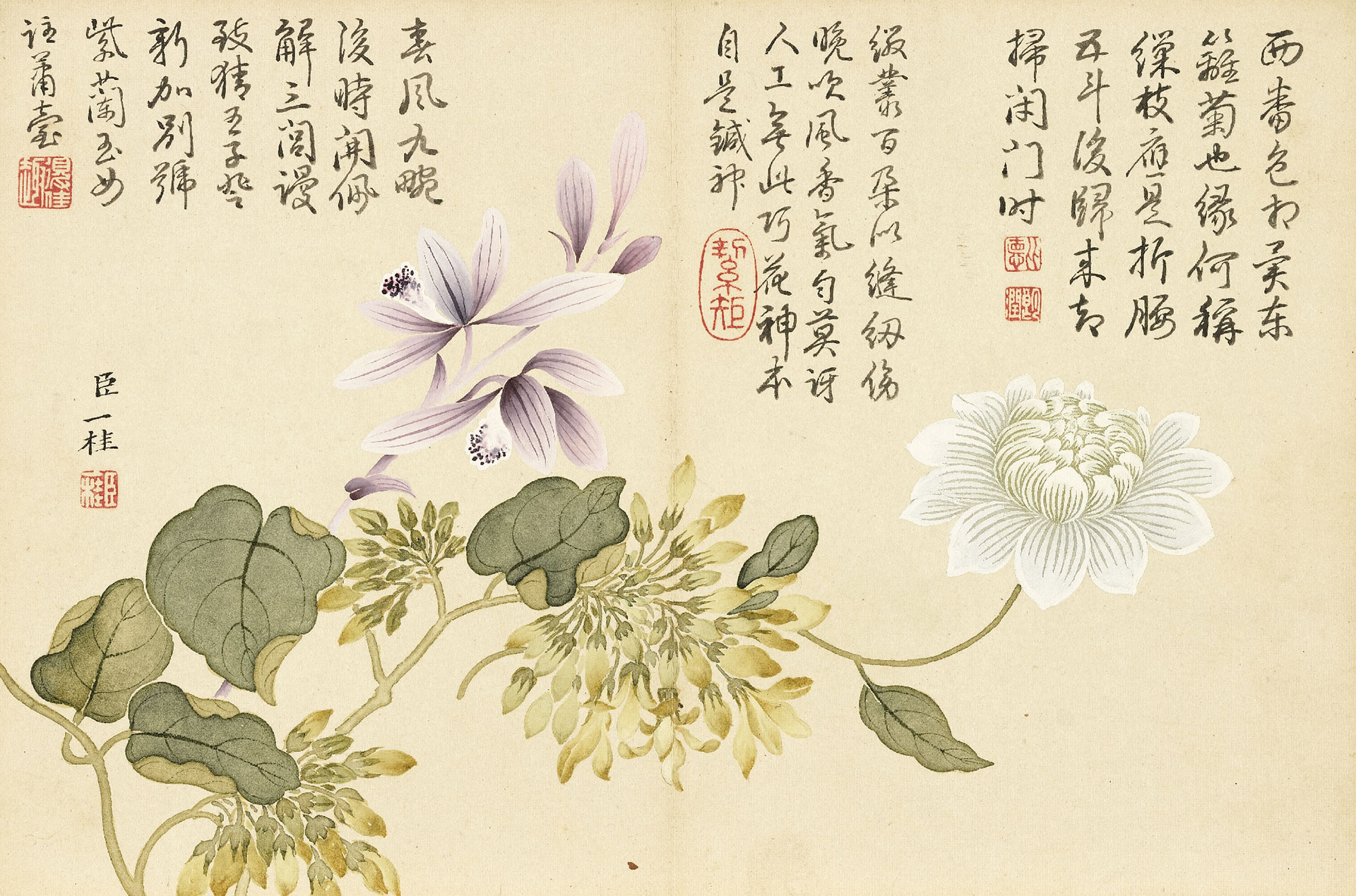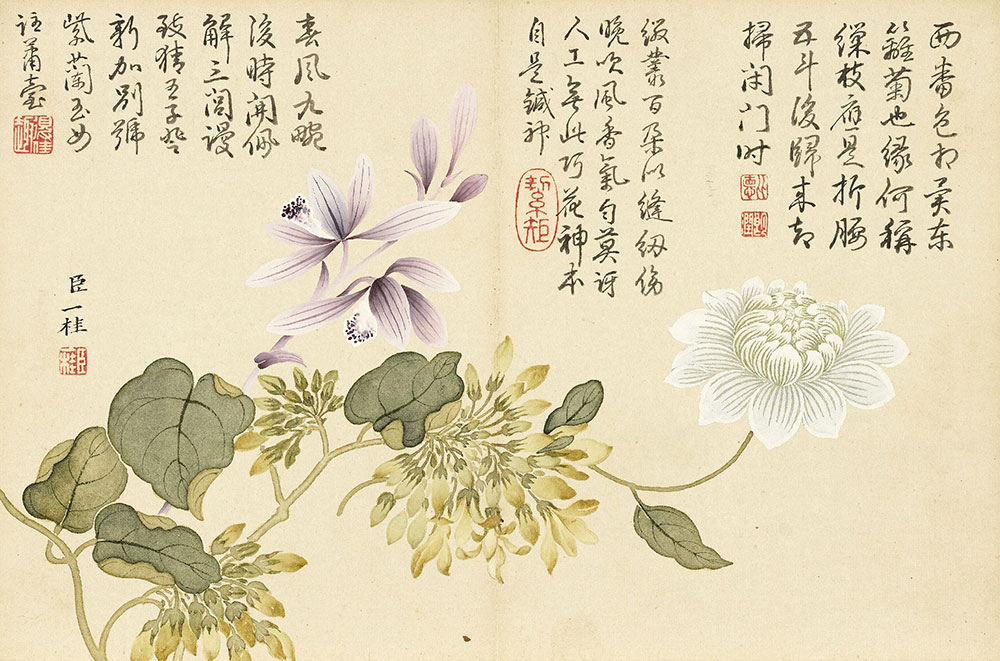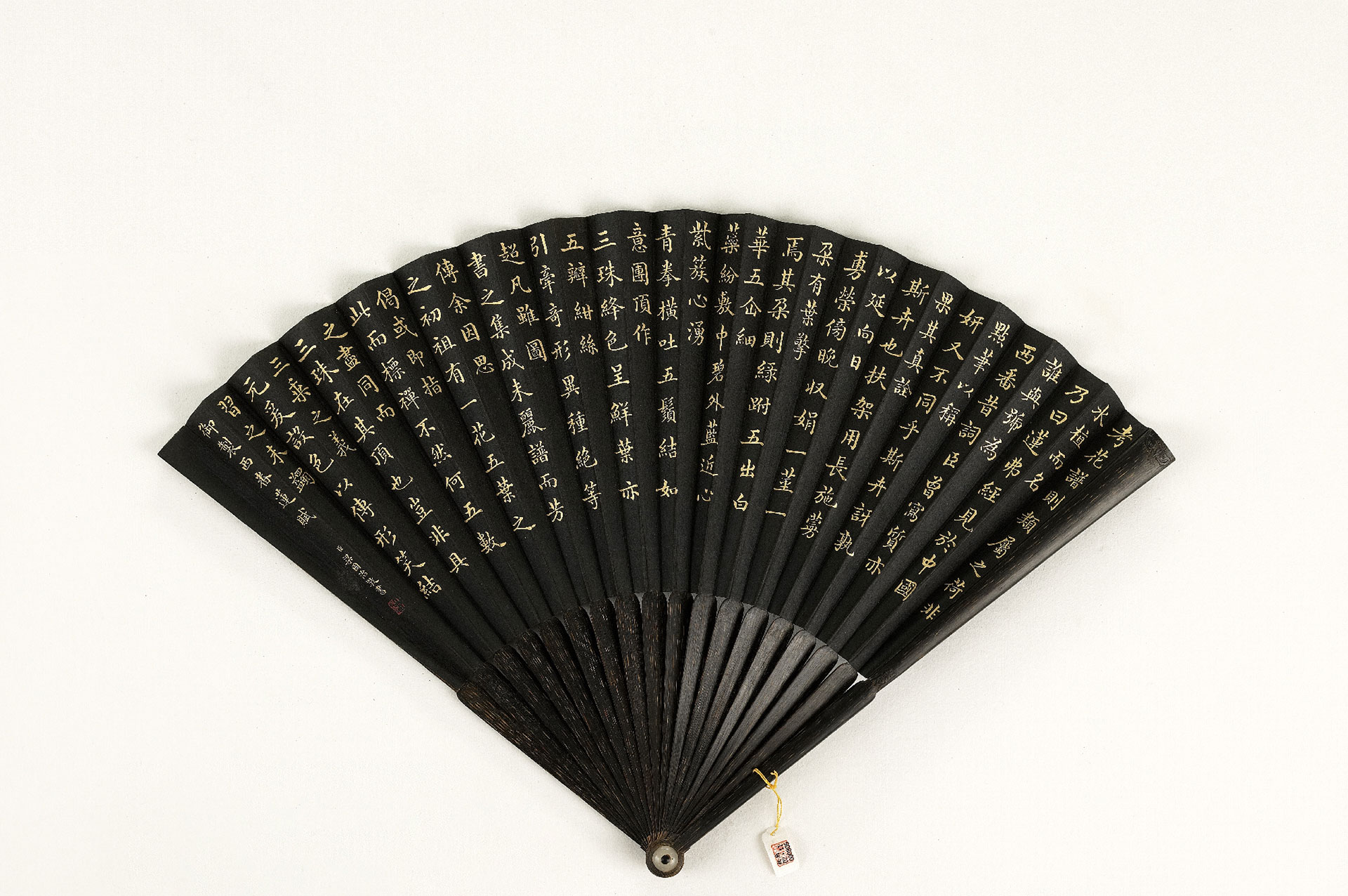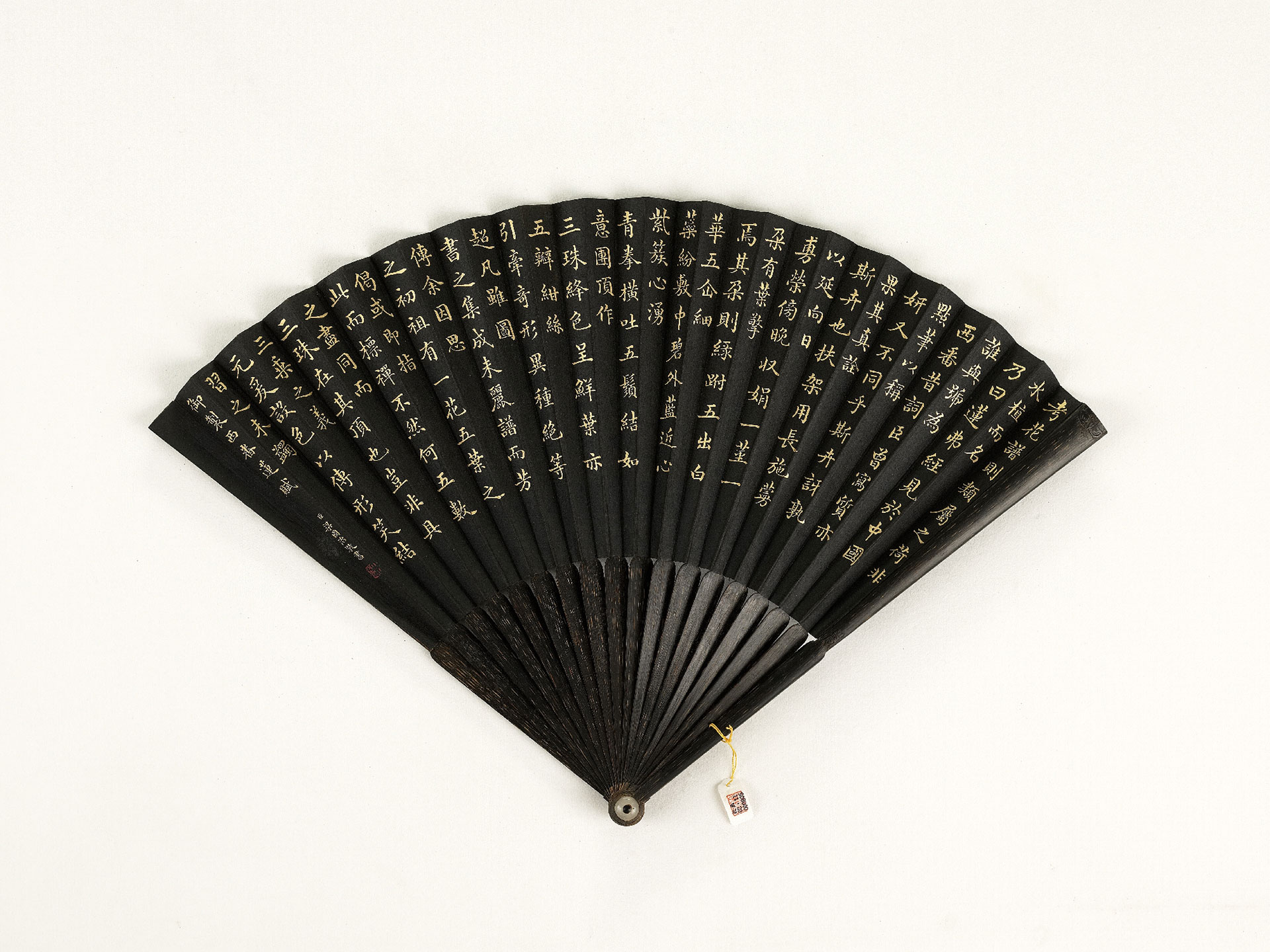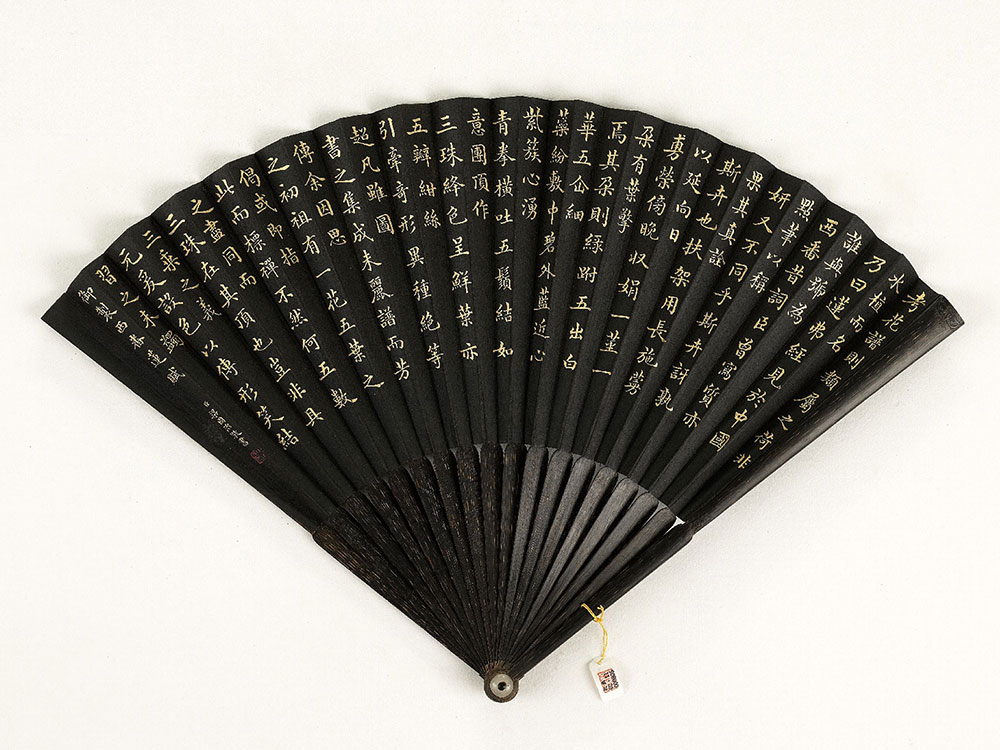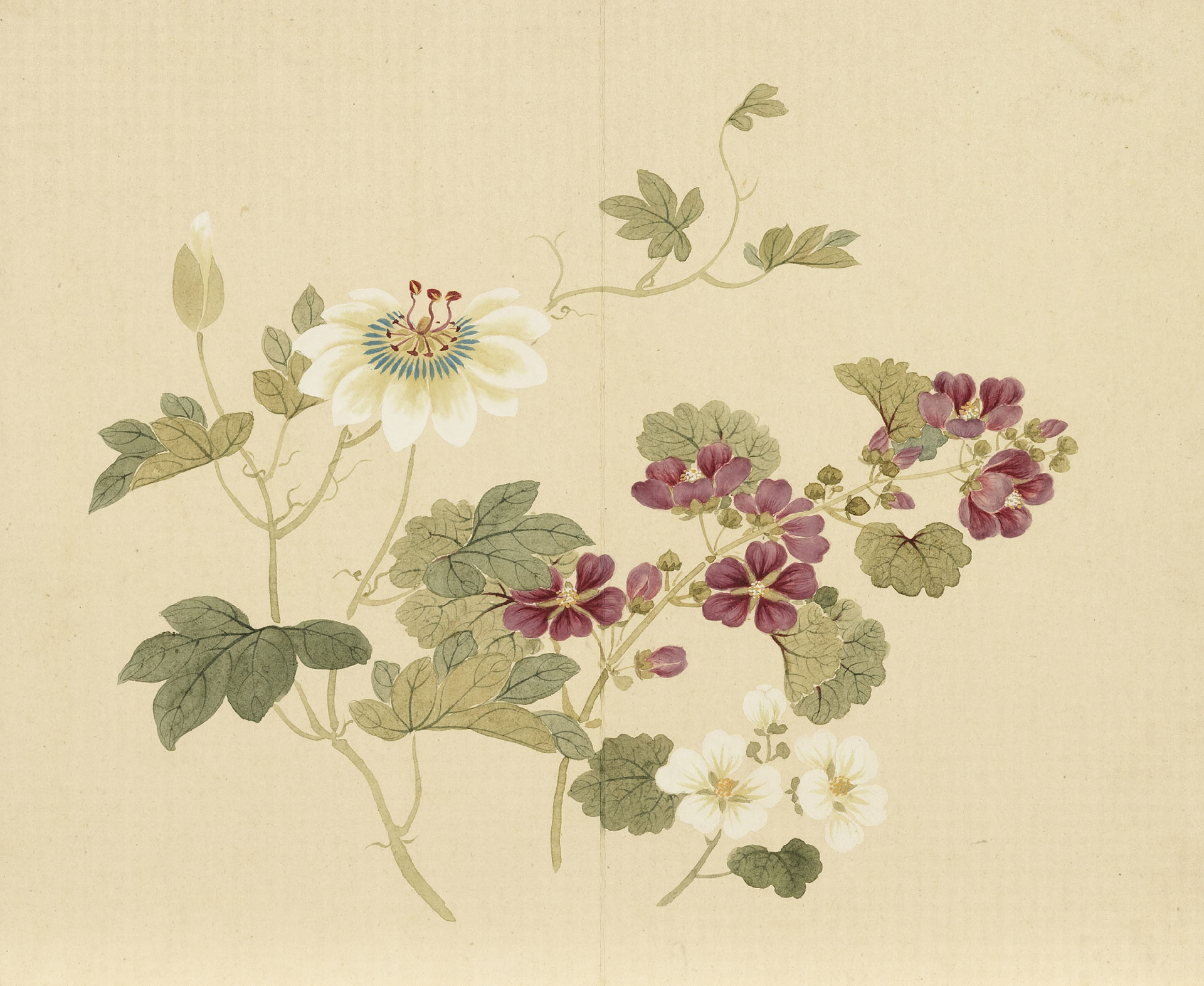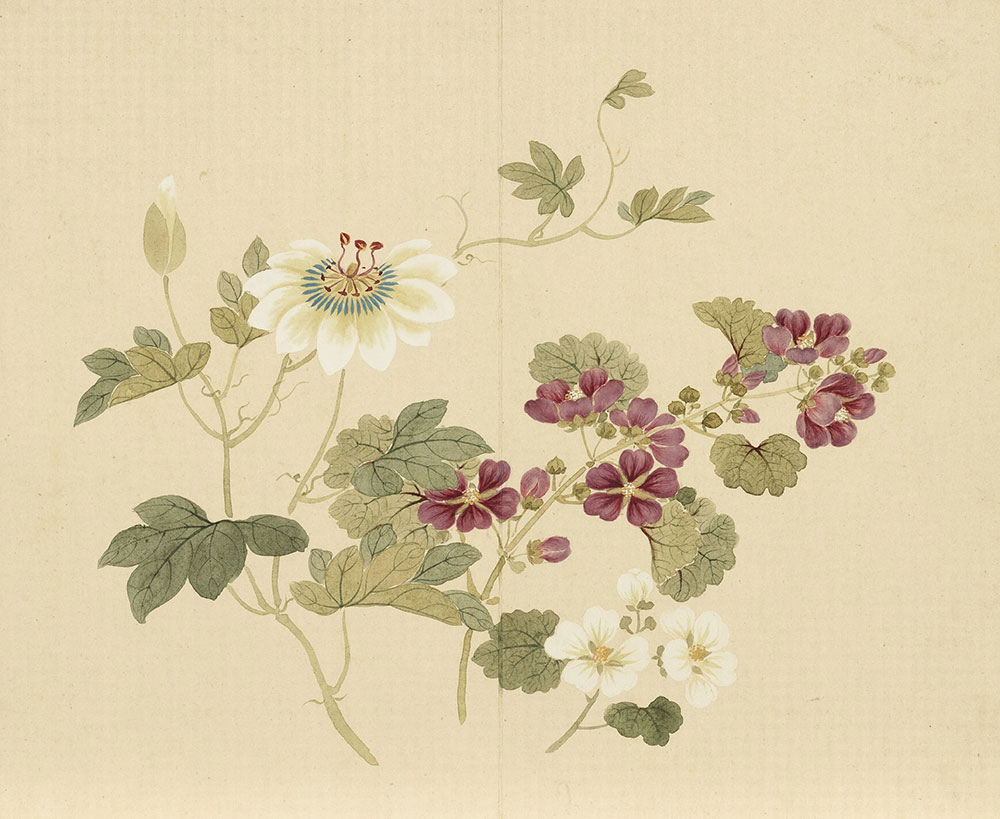Encyclopedic Research into Flowers
Almost any question about flowers or plants can be answered by consulting the Record of all Fragrant Flowers. Compiled during Emperor Kangxi’s reign, this floral-botanical encyclopedia contains the alternate names, growth habits, varietals, and histories of countless plants, in addition to poems and odes written about them by literati over the centuries. This text is thus one of the most important references for researching the poetry emperors and scholars wrote to praise the glory of flowers in bloom.
In response to the Qianlong Emperor’s (born Aisin-Gioro Hongli; 1711-1799) passion for connoisseurship and research, the scholar-attendants and artists in his retinue produced a great variety of paintings of flowers and plants. These artworks served as backdrops upon which the emperor displayed his talents for calligraphy and poetry, as he enjoyed himself by naming the flowering plants in the paintings or embellishing them with poetry written in his own hand.
What is the exotic plant known as "passionflower"?
"Passionflower" is a term that broadly refers to flowering plants that were imported to the Qing dynasty. Their Chinese name translates as "exotic occidental lotus," a name they were given because their flower petals can look similar to those of lotus flowers. Because gazetteers from various parts of China and encyclopedic leishu publications all described passionflowers in different ways, Qianlong(1711-1799) eventually decided to define them as being "bluish-green at their centers and white at their edges, with purple tendrils near their cores, and fist-like structures that spring from their hearts and grow five horizontal appendages." His description is quite similar to the bluecrown passionflower (Passiflora caerulea L.), which is a thin-stemmed climbing plant that relies on other plants or support structures in order to grow. Bluecrown passionflower is a varietal with especially pronounced pistils and stamens, a feature that closely accords with characteristics of the "occidental lotus" patterns found on many Qing dynasty decorative vessels.
- Paintings from Life (Asian Virginsbower and Chinese Hawthorn)
- Jiang Tingxi, Qing dynasty
- Paper
This piece is a selection from Jiang Tingxi’s album Paintings from Life. It portrays a branch on a Chinese hawthorn (Crataegus pinnatifida) tree, upon which the flowers of a creeping vine have come into full bloom. The Chinese hawthorn’s own flowers have all completely withered, allowing red berries to grow in their place. These details tell us that the painting almost certainly depicts an autumnal scene.
The creeping vine seen here is Asian virginsbower (Clematis florida), which relies upon support from other plants or structures in order to grow. In this painting’s case, we see white-flowered Asian virginsbower creeping out to the very end of a tree branch. The flowers’ structures were painted with incredible attention to detail—this type of flower’s outermost large petals in fact develop from the bud’s calyx, whereas the actual flower petals are the smaller ones seen surrounding the center of the blossom. The Record of All Fragrant Flowers has records of a plant whose “flowers and leaves are both like passionflower, while its pistil and stamen are as black as iron wire.” This note on the similarities between Asian virginsbower and passionflower (genus Passiflora) can be used to identify painters’ depictions of passionflowers.
- Flowering Plants (Chinese Ground Orchid, Lady of the Night, Creeping Chrysanthemum)
- Zou Yigui, Qing dynasty
- Paper
This selection from Zou Yigui’s album of paintings called Flowering Plants features Chinese ground orchid (Bletilla striata), lady of the night (Cestrum nocturnum), and a white-flowered plant whose Chinese name translates as “creeping chrysanthemum.” Poetry written by Emperor Qianlong appears in the painting’s upper portions. An addendum to the painting notes that, in terms of its appearance, “creeping chrysanthemum is similar in to Asian virginsbower” (Clematis florida). Careful examination of the white-flowered plant’s leaves reveals that it does not have the split feather-shaped leaves common to plants of the genus Chrysanthemum. It is instead likely to be a member of the genus Clematis.
- Calligraphy of "Ode to Passionflowers" Commissioned by Emperor Qianlong
- Liang Guozhi, Qing dynasty
- Paper
The scholar-attendant Liang Guozhi (1723-1786) emblazoned this fan with a calligraphic rendering of a poetic essay entitled “Ode to Passionflowers.” In the summer of his fortieth year of reign (1775), the Qianlong Emperor personally painted colored depicted of flower cuttings and wrote “Ode to Passionflowers.” An addendum Qianlong wrote notes that, due to a lack of clarity in the descriptions in the Record of All Fragrant Flowers, he initially mistook Asian virginsbower for passionflower.
After engaging in further research, Emperor Qianlong determined that a flowering plant he observed at the Chengde Mountain Resort was in fact true passionflower. He made records indicating that its stamen and pistil are characterized by being “bluish-green at their centers and white at their edges, with purple tendrils near their cores, and fist-like structures that spring from their hearts and grow five horizontal appendages.” From the characteristics of the flowers on the creeping vine Qianlong described, it can be hypothesized that he may have been observing bluecrown passionflower (Passiflora caerulea), a plant that is endemic to South America.
- Flowering Plants of the Four Seasons (Passionflower and Common Mallow)
- Dong Gao, Qing dynasty
- Paper
Dong Gao (1740-1818), who was son of the landscape painter Dong Bangda (1699-1769) obtained the title chuanlu (meaning he placed first among those in the second rank of “presented scholars”) in the imperial examinations in the twenty-eighth year of Emperor Qianlong’s reign (1763). Qianlong once praised the realism of the flowers-and-plants paintings he made using the unoutlined “boneless” (mogu) techniques he learned from Zou Yigui (1686-1772).
This piece, a selection from the album Flowering Plants of the Four Seasons, depicts white passionflower (genus Passiflora) and red common mallow (Malva sinesis)—both are plants that come into bloom in the summertime. In close keeping with the characteristics Qianlong described in “Ode to Passionflowers,” the passionflowers in this image feature white petals, have trios of purple pistils and stamens at their centers, and are surrounded by blue coronas. This sort of varietal, with its protruding pistils and stamens, leads one to think of the passionflower patterns that embellish many of the vessels that graced the halls of the Qing dynasty imperial palaces.
